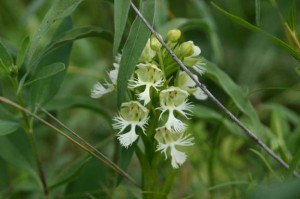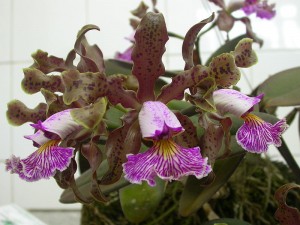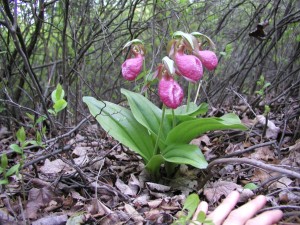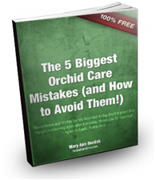Over the past few decades an exponential number of flora and fauna species have been listed on the endangered species list and, worse yet, the extinct species list. Unfortunately humans have dramatically impacted the environment in a way that, for some species, the damage is irreversible; however, there are many endangered and rare orchids that can still be saved. Knowing what endangered orchid species are, what’s causing their rapid decline, and how promoting awareness can help will aid in the re-population of many orchid species.
1. Platanthera praeclara
 The Platanthera praeclara, also commonly known as the western prairie fringed orchid, is an endangered and very rare orchid found in only a handful of states within the Midwest. It’s a stunningly beautiful orchid that grows up to three feet tall and features about a dozen white flowers on each stalk. The decline of this unique white orchid is due to human development, brush and forest fires, as well as overgrazing.
The Platanthera praeclara, also commonly known as the western prairie fringed orchid, is an endangered and very rare orchid found in only a handful of states within the Midwest. It’s a stunningly beautiful orchid that grows up to three feet tall and features about a dozen white flowers on each stalk. The decline of this unique white orchid is due to human development, brush and forest fires, as well as overgrazing.
2. Bulbophyllum kupense
This particular orchid is critically endangered due to the clearance of trees and small scale agriculture within its native area. It’s found in the Republic of Cameroon (Africa), and currently there is only one known plant on a mango tree within a private garden. There are likely other Bulbophyllum kupense nearby growing naturally, however there needs to be more done to research and identify them for protection and collection.
 3. Cattleya schilleriana
3. Cattleya schilleriana
This is a stunning orchid that features beautiful purple blossoms and grows only around 4-5 inches in size. Native to Brazil, this endangered orchid is seeing numbers decline due to habitat destruction and poaching.
4. Bulbophyllum modicum
This is another species native to the Republic of Cameroon and there have been very few plants recorded which leads some to believe it may be extinct. Three collections of this species have been discovered outside of a town called Buea. The presence of humans, expansion of housing, as well as deforestation have led to the decline and possible extinction of this orchid.
 5. Cypripedium acaule
5. Cypripedium acaule
The Cypripedium acaule, commonly known as the lady’s slipper, is a species of orchids that are endangered but are now highly protected. This particular orchid species only produces one bloom at a time – a single pink flower from atop a long stalk. Poaching, habitat destruction, and agriculture have dramatically reduced the population to the endangered levels.
Promoting Awareness
There are countless orchid species that should be placed on the endangered species list; however, orchids are highly underrepresented as a whole. A huge problem with endangered orchids is that not enough identification and research is done on species in the wild. If more research is done, then it would be far easier to see when a species is beginning to decline in numbers which ultimately could help prevent it from extinction overall.
Prevent poaching
When awareness is raised, appropriate authorities are put under more pressure to crack down on poaching and illegal activities. This allows orchids to grow and flourish naturally in the wild without human intervention!
Raise money
Orchids play a vital role in their surrounding environment, and their decline in nature is systematic of the effect humans are having. When awareness is raised, more money will be channeled into research and conservation for rare and endangered orchid species.
Increase Research
Research is vital for the preservation and cultivation of endangered orchid species across the world. Unfortunately many orchids live in an intense environment (such as the Paphiopedilum armeniacum which grows on cliff edges) which makes research costly and difficult. When more awareness is focused on endangered orchid species, the amount of funding placed into research also increases.
Cultivate At Home
There are many orchid species which simply are not flourishing in the wild either due to natural causes or to human development. Species such as the American ghost orchid will often go years without blooming because they’re not exposed to the exact environment they require. This leads to slow growth and re-population – something that can be done within greenhouses and in homes.
With awareness raised, orchid owners can then begin to cultivate these rare and endangered species at home and within greenhouses to help boost their numbers and ensure that various species do not go extinct.




What Readers Are Saying